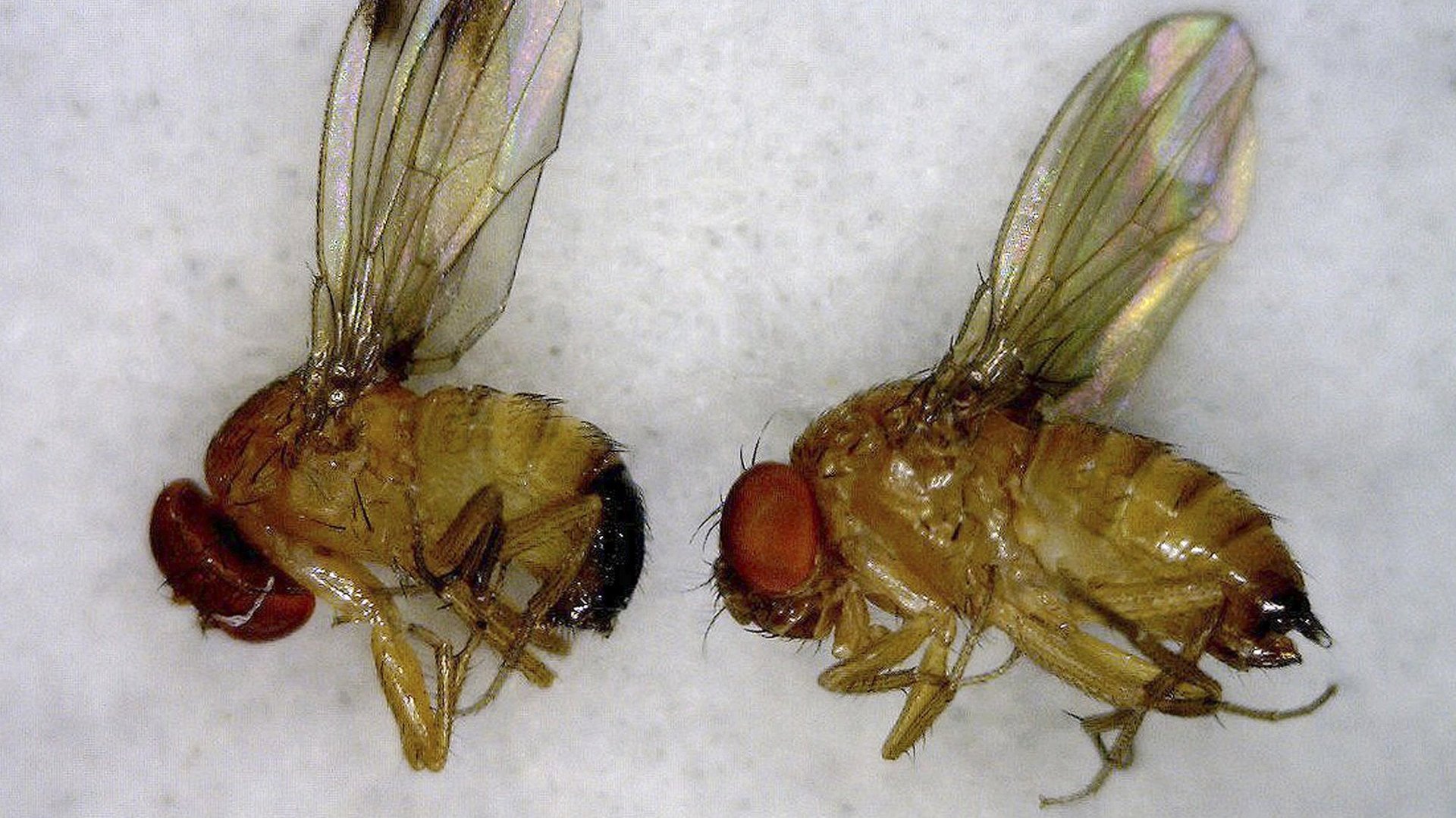How the fruit fly is helping us fight cancer
Cancer research is a global effort involving millions of people, and the fruit fly Drosophila melanogaster—which has been helping our understanding of the disease for decades—is still illuminating the most fundamental part of this process: the beginning.


Cancer research is a global effort involving millions of people, and the fruit fly Drosophila melanogaster—which has been helping our understanding of the disease for decades—is still illuminating the most fundamental part of this process: the beginning.
When praising the fly as a research organism, I am an interested party. I started working with this insect in 1999, and visitors to our institute rewarded my enthusiasm for Drosophila with the nickname “Spanish fly man.” I find fascinating the capacity of the fly to tell us about how cells use genetic information to interact with each other—and make decisions about their behavior. If cells make wrong decisions it can result in them building the rogue structures we know as tumors.
More than half the human disease genes have an equivalent in Drosophila. This is why Drosophila have been used for over a century to investigate the fundamental mechanisms of inheritance and have turned out to be a great tool for understanding the function of human genes.
Discussed at highest levels
In 2008 Sarah Palin, then candidate for US vice-president, dismissed research in fruit flies as “having little or nothing to do with the public good,” contrasting it with the need to spend tax money on research on cognitive disorders. Some of these disorders, however, are being successfully modelled in Drosophila. As recently as last February, US senator Rand Paul used fly research into sex and the aging process to attack funding decisions at the US National Institutes of Health.
Both Palin’s and Paul’s comments were embarrassingly misinformed—which earned rather vitriolic responses from the media—but highlight how easy it can be to under-appreciate the research power of the fruit fly.
Working with the humble fruit fly is fast and cheap, and allows scientific answers with great detail on virtually any general biological problem. For instance it was when using flies that we learned our genes reside in the chromosomes in linear order, and that ionizing radiation can cause mutations.
Drosophila researchers work across a whole range of areas—from stem cell biology to neurobiology, genomics, cancer, evolution, ecology, immunity, aging, metabolism—all areas of obvious economic and societal interest. And since Drosophila was established as a research workhorse around 1910 it has accumulated an important list of contributions, some rewarded with the Nobel Prize in Physiology or Medicine (in 1933, 1946, 1995, 2006 and 2011, for discoveries ranging from embryonic development to the activation of the innate immune response to fight infections).
Genes and cancer
The fly contributions to cancer research started in 1967, with the discovery of the first tumor suppressor gene (genes whose function is to prevent cells from becoming cancerous).
Drosophila has been particularly brilliant at the identification of new genes and drosophilists name new genes after the defects observed when the fly lacks their function and similar defective genes in humans have also been similarly named. Malfunctioning of the hedgehog or porcupine genes, named after fly maggots with an excessive number of spikes in their belly (which allow them to crawl)—and the notch gene, from flies with a serrated wing margin—are linked to cancers of the blood, breast, intestine, skin or brain in humans.
The molecular similarity between fly and human genes allow studying human disease in Drosophila, sometimes before experimentation in larger animals is required.
Drug screening
Genetic similarity also leads to other interesting developments. In the last decade, Drosophila use in human disease research has expanded with the first drug screens in flies. Compared with screening in cells cultured in a dish, fly screens filter out drugs that would have harmful side effects in the whole organism, or are poorly absorbed in the intestine, or degraded during digestion. This saves money in a drug development project.
Of course, Drosophila has important limitations when it comes to learning about human disease: flies lack breasts, a prostate, or lungs (flies breathe through a network of rigid pipes). It is still possible, however, to study the genes associated with human cancers in these and other tissues.
We can breed flies with genetic alterations mimicking those in specific cancers, and then look for an organ in the fly (such as the wing—it does not have to be the “original” human organ) where these alterations lead to cancerous growth, and study how this happens. For instance, working alongside Matt Smalley and Alan Clarke, we are developing models at Cardiff University to study gene functions that we know are important for breast and prostate cancer, but whose functional details are largely unknown, and costly to pursue with research using mice.
Drosophila has a long history of research in bio-medicine, and its capabilities as a model are being expanded and updated every year. It is an exciting and fundamental system to work with, that could transform the way research into cancer develops in the future. So after more than a century of use, these humble flies are still at the cutting edge of cancer research.